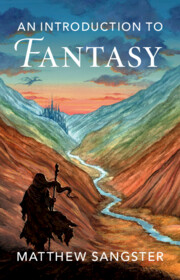Refine search
Actions for selected content:
86 results
A review of the nematode assemblage of the Australian bush rat, Rattus fuscipes (Muridae)
-
- Journal:
- Journal of Helminthology / Volume 99 / 2025
- Published online by Cambridge University Press:
- 24 November 2025, e126
-
- Article
- Export citation
20 - Literacies for Teaching
- from Part V - Practice
-
-
- Book:
- The Cambridge Handbook of Technology in Language Teaching and Learning
- Published online:
- 15 June 2025
- Print publication:
- 26 June 2025, pp 332-347
-
- Chapter
- Export citation
9 - Religious Practice during the Holocaust
-
-
- Book:
- The Cambridge History of the Holocaust
- Published online:
- 16 May 2025
- Print publication:
- 12 June 2025, pp 147-162
-
- Chapter
- Export citation
1 - Programs for infants and toddlers: The forces shaping contemporary practice
-
- Book:
- Intentional Practice with Infants and Toddlers
- Published online:
- 17 June 2025
- Print publication:
- 12 June 2025, pp 16-43
-
- Chapter
- Export citation
11 - Community health needs assessment
- from Part III - Skills for practice
-
-
- Book:
- An Introduction to Community and Primary Health Care
- Published online:
- 27 March 2025
- Print publication:
- 20 March 2025, pp 174-190
-
- Chapter
- Export citation
5 - First Nations’ health and well-being: culturally responsive practice in primary health care
- from Part II - Diverse communities
-
-
- Book:
- An Introduction to Community and Primary Health Care
- Published online:
- 27 March 2025
- Print publication:
- 20 March 2025, pp 70-89
-
- Chapter
- Export citation
21 - Drug and alcohol nursing
- from Part IV - Community and primary health care roles
-
-
- Book:
- An Introduction to Community and Primary Health Care
- Published online:
- 27 March 2025
- Print publication:
- 20 March 2025, pp 318-332
-
- Chapter
- Export citation
15 - Community health nursing
- from Part IV - Community and primary health care roles
-
-
- Book:
- An Introduction to Community and Primary Health Care
- Published online:
- 27 March 2025
- Print publication:
- 20 March 2025, pp 242-252
-
- Chapter
- Export citation
8 - Comprehensive Deterrence Theory: Policy Implications
-
- Book:
- Comprehensive Deterrence Theory
- Published online:
- 06 March 2025
- Print publication:
- 13 March 2025, pp 199-226
-
- Chapter
- Export citation
Dance as Public Humanities
- Part of
-
- Journal:
- Public Humanities / Volume 1 / 2025
- Published online by Cambridge University Press:
- 17 February 2025, e55
-
- Article
-
- You have access
- Open access
- HTML
- Export citation
8 - Port and Populace II
- from Part II - The Steam Era
-
- Book:
- Maritime Metropolis
- Published online:
- 21 November 2024
- Print publication:
- 28 November 2024, pp 214-239
-
- Chapter
- Export citation

Women and the Army in the Roman Empire
-
- Published online:
- 24 October 2024
- Print publication:
- 07 November 2024
Chapter 21 - Climate Change Ecology
- from Part V - Ecosystem and Global Ecology
-
- Book:
- Ecology in Action
- Published online:
- 04 April 2024
- Print publication:
- 04 July 2024, pp 534-567
-
- Chapter
- Export citation
Empowering Communities in Geopolitical Crises: A Role for Disaster Medicine and Public Health Preparedness
-
- Journal:
- Disaster Medicine and Public Health Preparedness / Volume 18 / 2024
- Published online by Cambridge University Press:
- 19 April 2024, e90
-
- Article
-
- You have access
- HTML
- Export citation
Chapter 1 - Introduction
- from Part I - Overview of Extension and the Social Sciences
-
-
- Book:
- Extension Education and the Social Sciences
- Published online:
- 28 March 2024
- Print publication:
- 04 April 2024, pp 3-14
-
- Chapter
- Export citation
SITI Training: Viewpoints and the Suzuki Method for Cross-Cultural Collaboration
-
- Journal:
- New Theatre Quarterly / Volume 40 / Issue 1 / February 2024
- Published online by Cambridge University Press:
- 13 February 2024, pp. 48-61
- Print publication:
- February 2024
-
- Article
- Export citation

An Introduction to Fantasy
-
- Published online:
- 07 October 2023
- Print publication:
- 07 September 2023
8 - Cohesion and Groups
- from Part II - Seeing Structure
-
- Book:
- Network Analysis
- Published online:
- 21 September 2023
- Print publication:
- 05 October 2023, pp 161-189
-
- Chapter
- Export citation
Final Report of the ILA Committee on Participation in Global Cultural Heritage Governance
-
- Journal:
- International Journal of Cultural Property / Volume 30 / Issue 2 / May 2023
- Published online by Cambridge University Press:
- 29 September 2023, pp. 230-244
-
- Article
-
- You have access
- Open access
- HTML
- Export citation
6 - Fantastic Communities and Common Ground
-
- Book:
- An Introduction to Fantasy
- Published online:
- 07 October 2023
- Print publication:
- 07 September 2023, pp 374-431
-
- Chapter
- Export citation
